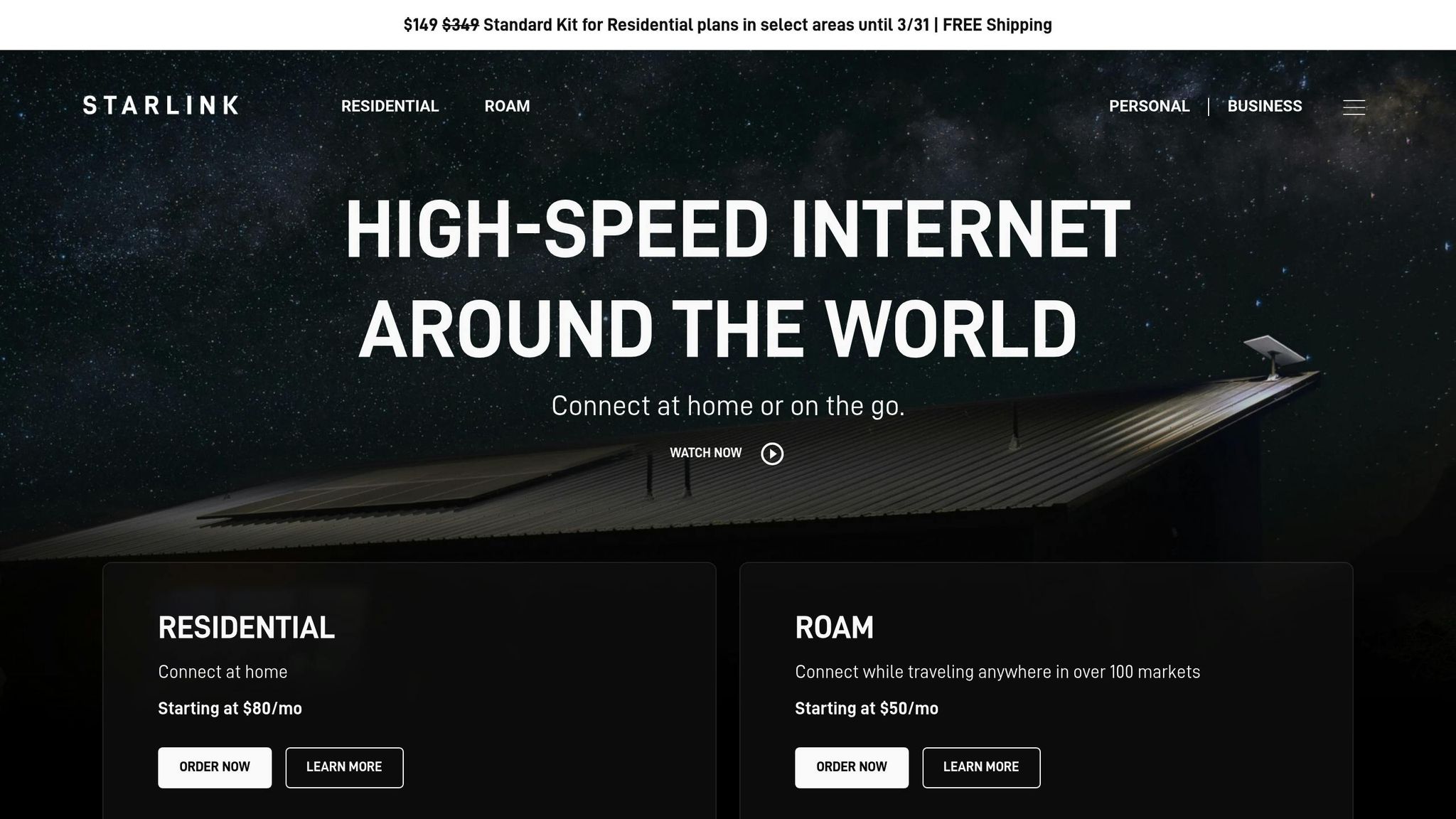Top 7 Timing Tips for SpaceX Investors
Learn key timing strategies for investing in SpaceX, focusing on funding rounds, launch success, and market trends to optimize your investment decisions.

Want to invest in SpaceX? Timing is everything. Whether you’re eyeing pre-IPO shares or waiting for a public offering, here are the 7 key factors you need to track:
- Funding Rounds: Watch SpaceX’s valuation changes and investor confidence during funding rounds.
- Launch Success Rates: Check mission success, launch frequency, and booster recovery for operational insights.
- Starlink Growth: Monitor subscriber numbers, market reach, revenue trends, and satellite deployment.
- Tech IPO Trends: Study the broader tech IPO market to align SpaceX’s potential public debut with favorable conditions.
- Space Industry Rules: Stay updated on regulations affecting launches, satellites, and international policies.
- Employee Stock Sales: Insider trading activity can reveal confidence in the company’s future.
- Pre-IPO Tools: Use platforms that track valuations, risks, and secondary market activity for smarter decisions.
Quick Tip: Combine these insights with real-time analytics to refine your strategy. Investing in SpaceX requires careful timing, research, and tools to navigate the private market effectively.
Investing $250K Into SpaceX 🚀

1. Track SpaceX Funding Rounds
Keeping an eye on SpaceX's funding rounds can give you a clear picture of its valuation changes and investor confidence. Each funding round reflects how the market views the company's potential and could highlight promising investment opportunities.
Here’s how to make the most of this information:
- Stay informed: Regularly check news updates and official announcements about SpaceX.
- Watch valuation trends: Changes in valuation can reveal shifts in market sentiment.
- Spot key moments: Successful funding rounds might signal good times to consider investing.
2. Check Launch Success Rates
Operational performance is just as important as funding rounds when deciding the right time to invest. For SpaceX, launch success rates provide valuable insights into how well the company is performing and its standing in the market.
A strong track record of successful launches often builds market confidence and drives revenue growth. These factors directly impact when and how investors choose to enter the market.
Here are the main metrics to evaluate launch performance:
- Mission Success Rate: Look at both full and partial mission results, as they can shape investor confidence.
- Launch Cadence: A consistent and predictable schedule shows operational efficiency. Trends in how often launches occur can highlight improvements in capacity.
- Recovery Success: Better booster recovery reduces costs and increases profitability.
Pay attention to patterns like back-to-back successful launches and a rise in launch frequency. These trends suggest a solid operational base and a growing market presence. Combining this data with valuation insights can help you develop a well-rounded investment strategy.
The SpaceX Stock Investment Guide platform provides real-time updates on these metrics through its analytics dashboard, making it easier for investors to decide when to act.
3. Review Starlink Growth Numbers

Starlink's performance data plays a key role in shaping SpaceX's investment strategies. These figures not only impact SpaceX's overall valuation but also provide insights into the company's business momentum.
Here are the main metrics worth keeping an eye on:
- Subscriber Growth: Keep track of the number of active subscribers and how these numbers are trending across different markets.
- Market Reach: Look at Starlink's expansion into new regions and the rate at which services are being adopted.
- Revenue Patterns: Examine both the average revenue per user (ARPU) and overall revenue growth.
- Service Coverage: Assess the deployment of satellite constellations and the availability of services in various areas.
When these metrics show upward trends, it often points to strong market conditions and possible investment opportunities. The SpaceX Stock Investment Guide platform provides real-time analytics on these data points through its dashboard, making it easier for investors to pinpoint the best times to act.
4. Study Tech IPO Market Trends
SpaceX's impressive performance metrics and Starlink's expansion are key drivers, but understanding the broader tech IPO landscape is just as important. Examining these trends helps put SpaceX's market position and potential public offering into perspective.
Recent tech IPO patterns highlight factors that can influence investment timing. Key elements to watch include:
- Market sentiment and trading activity in the tech IPO space
- Impact of interest rates on growth valuations and first-day performance
- Investor interest, valuation benchmarks, and post-IPO price trends
- Regulatory updates and levels of institutional involvement
- Performance of space-related stocks during different market cycles
- Revenue and growth metrics of newly listed tech companies
To gauge the best timing, focus on companies with similar characteristics, such as high valuations and significant R&D spending. Leverage IPO analysis tools to track these trends and spot favorable market windows.
Keep a close eye on market trends and align them with SpaceX's growth trajectory to make well-timed investment decisions.
5. Monitor Space Industry Rules
Regulations in the space industry play a critical role in shaping SpaceX's operations and investment decisions. Agencies like the FAA and FCC regularly update rules that influence launch schedules, satellite deployments, and commercial space activities.
Here are some key areas to keep an eye on:
-
Launch licensing requirements
Changes in the licensing process can impact how often SpaceX can schedule launches and may also influence operational costs. -
Satellite constellation rules
Guidelines, such as those addressing orbital debris, can affect the costs and strategies for deploying satellite networks like Starlink. -
International space traffic management
Global coordination efforts, including input from organizations like the UN Office for Outer Space Affairs (UNOOSA), can affect launch windows and satellite positioning.
Keeping track of regulatory announcements and adjustment periods is essential. These updates can sometimes create new opportunities for investment, though they may also lead to temporary fluctuations in short-term valuations.
To navigate this effectively:
-
Monitor policy updates
Follow schedules and announcements from key agencies to stay ahead of planned reviews and new rulemaking. -
Evaluate compliance readiness
Assess how prepared SpaceX is for regulatory changes to better understand its operational stability and timing.
These insights, combined with performance metrics, can help shape a well-rounded investment strategy.
6. Follow Employee Stock Sales
Looking at insider actions, like employee stock sales, can provide valuable clues about SpaceX's valuation and growth outlook. These sales often reflect how insiders feel about the company's future.
Here’s what to watch for:
- Executive Transactions: When senior leaders sell stock, it can indicate their confidence - or lack of it - in the company’s direction.
- Overall Trading Volume: Changes in how much stock is being traded by employees can hint at shifts in sentiment.
- Timing Correlation: Pay attention to sales that coincide with major company milestones; they can offer strategic insights.
To stay informed, make use of pre-IPO investment tools that track employee trading activity. This type of data adds another layer to your investment analysis, complementing insights from funding, operations, and regulations.
7. Use Pre-IPO Investment Tools
Pre-IPO tools can sharpen your investment timing by providing critical data and insights. These tools are particularly useful for navigating SpaceX investments.
Features to Consider:
- Valuation Tracking: Tools that monitor changes in valuation, based on funding rounds and performance metrics, can help pinpoint the best times to invest.
- Accredited Investor Verification: Platforms often include systems to verify SEC accreditation, a requirement for accessing SpaceX shares.
- Risk Assessment Tools: Choose platforms offering insights into key risk factors:
| Risk Factor | Metric | Importance |
|---|---|---|
| Market Timing | Tech sector IPO trends | Helps identify the best entry points |
| Liquidity | Secondary market activity | Shows potential exit opportunities |
| Regulatory | Compliance updates | Ensures eligibility and compliance |
How to Put This Into Action
Using a platform that consolidates multiple data sources can simplify your strategy. For example, the SpaceX Stock Investment Guide combines information about valuation trends, funding rounds, and private equity markets, making it easier to stay informed.
Integrating Tools Into Your Strategy
Automate alerts for valuation changes, track insider trades, and keep an eye on regulatory updates. These tools work together with earlier insights to refine your timing and overall approach. In the fast-moving private market, staying updated in real time is key to success.
Conclusion
Timing a SpaceX investment requires a mix of market insight, technical evaluation, and the right tools. The seven timing factors create a well-rounded approach to making informed decisions.
Key Investment Factors to Keep in Mind:
Effectively timing your SpaceX investment involves weighing several critical elements:
| Factor | Impact | Strategic Importance |
|---|---|---|
| Funding Rounds | Directly affects valuation | Reflects company growth trajectory |
| Launch Success | Demonstrates reliability | Builds market confidence |
| Starlink Growth | Expands revenue streams | Highlights commercial potential |
| Market Trends | Shapes investment climate | Helps identify optimal entry points |
These elements help you navigate the risks that come with pre-IPO investments. Platforms like the SpaceX Stock Investment Guide offer tools to track valuation shifts, funding developments, and private market trends, enabling more informed choices.
Key Steps for Success:
To make the most of pre-IPO opportunities, it’s crucial to understand their complexities:
- Confirm your accredited investor status
- Keep an eye on technical and business milestones
- Stay updated on regulatory developments
- Monitor activity in the secondary market
By focusing on these areas, you can better assess potential risks and opportunities.
Managing Risks:
Smart space-related investments rely on:
- Consistently tracking milestones
- Ensuring compliance with regulations
- Evaluating current market conditions
- Understanding the competitive landscape
As covered earlier, everything from funding rounds to regulatory shifts plays a key role in determining the right investment timing. In the ever-changing space industry, staying informed is non-negotiable.
Make decisions based on thorough research - not guesswork. Success in the private market demands patience, careful analysis, and well-timed action.
Comments ()